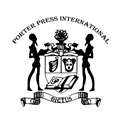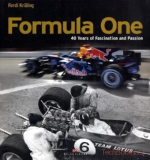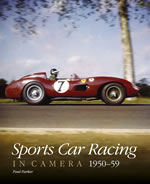Úvod »Automobily osobní a dodávky»Porsche » Sports Car Racing in Camera, 1960-69
Anotace
| Vazba: | Vázaná | ||
| Počet stran: | 240 | ||
| Rozměry v mm: | 230 x 280 | ||
| Počet obrázků: | 350 | ||
| Rok vydání: | 2016 | ||
The 1960s was an evocative but brutal decade in sports-car racing and still essentially unchanged from its late 1950s origins during the first two or three seasons; ditto the venues.
Here in colour and monochrome are the machines, their intrepid drivers and the many and varied circuits, some of them still public roads, which provided a stunning period backdrop that remained largely au naturel.
From the Ferraris, Maseratis, Porsches, Aston Martins, Jaguars et al to the beginning of the rear-engine era and the advent of American interests, sports-car racing underwent a radical transformation from the road-based racers of the previous decade.
Ferrari and Porsche largely dominated the first five seasons in their separate classes, but there was plenty of opposition and the rise of the GT category provided some more variety. The arrival of Carroll Shelby’s AC Cobra and later the legendary Daytona Cobra finally saw off the omnipotent Ferrari 250 GTO. This category also included mildly modified road cars, which allowed amateur racers to compete in championship events.
However, it took Ford two seasons to make their V8 prototypes reliable enough to take on Ferrari at endurance races, and the debut of their 7-litre cars handed them back-to-back Le Mans victories in 1966 and ’67. More radical were Jim Hall’s Chaparrals, which won at Sebring in 1965, the Nürburgring 1000km in 1966 and the 1967 BOAC 500 at Brands Hatch. The latter 2F’s automatic transmission was fragile; otherwise it would have won at least two other rounds in 1967.
From 1965 onwards Ferrari’s hegemony was gradually eroding, they were absent in 1968, the year that specified a 3-litre limit for the ‘prototypes’ and 5-litres for the GT prototypes as in Ford’s still-effective GT40s and the spectacular but fragile Lola T70s. Porsche introduced their iconic 3-litre flat-8 908 as Matra and Alpine-Renault joined the 3-litre class whilst Ray Heppenstall produced the truly innovative helicopter-turbine-powered Howmet TX.
Meanwhile the voluptuous Cosworth DFV-powered Ford P68 entered by Alan Mann looked very impressive, but various problems, which included a dreadful accident for Chris Irwin at the Nürburgring, damned it. Another attempt in 1969 fared no better.
In the last year of the decade Ferrari reappeared, but it was a half-hearted effort, matching its F1 form, whilst John Wyer Automotive, having won the manufacturers’ championship and Le Mans in 1968, repeated their Sarthe win in 1969 to Porsche’s great discomfort. Wyer also tried a Len Terry-designed BRM V12-powered Mirage, which later used a Cosworth DFV, but it was a relative dud.
So Porsche won the most races and introduced their terrifying 917, which would dominate in 1970 and ’71, whilst Roger Penske’s SUNOCO-sponsored Lola T70 Mk3B won at Sebring. Alfa Romeo (Auto Delta) had been racing their cars from the mid-60s and by 1969 had a 3-litre Tipo 33/3 that would carry them into the next decade.
This then is Volume 2 of Sports Car Racing in Camera, 1960–69; we hope you enjoy it.


































